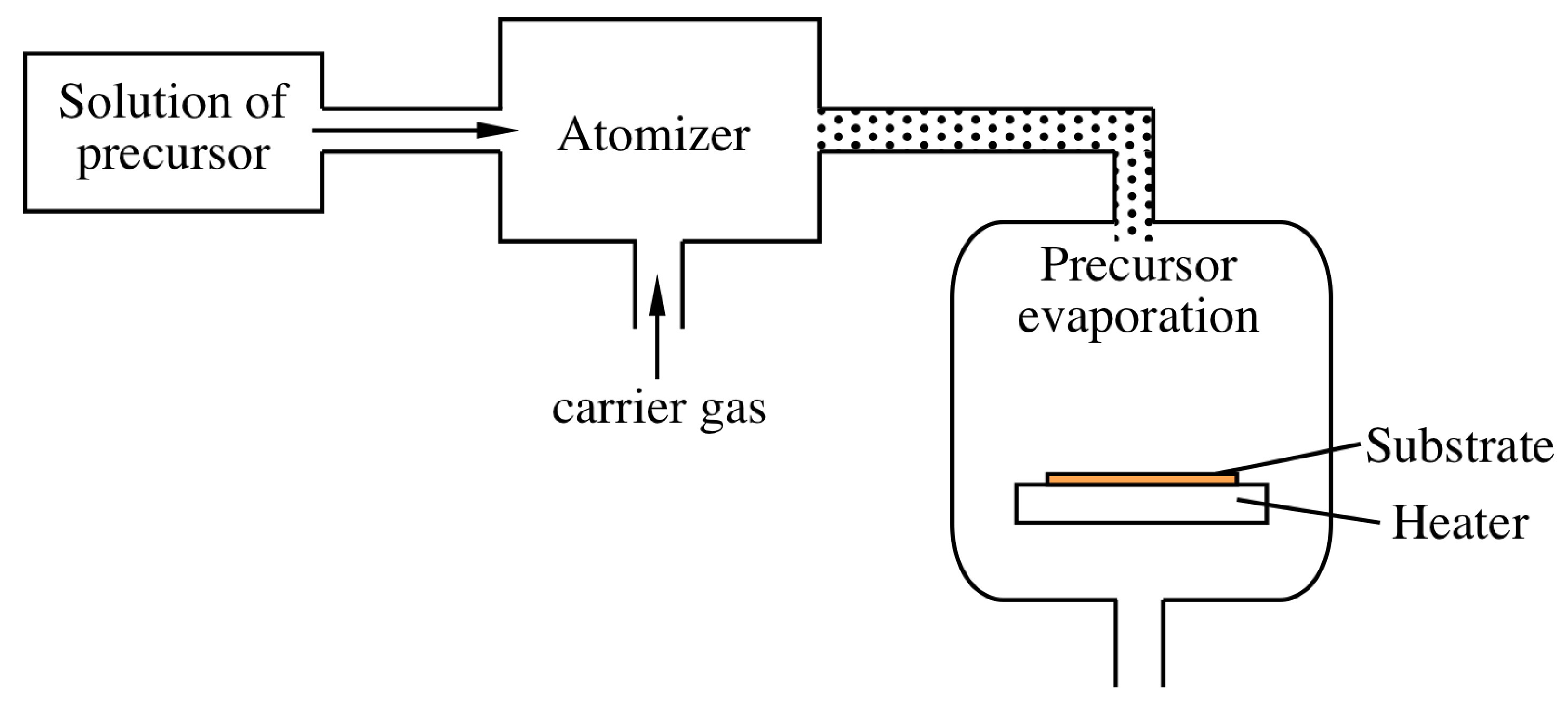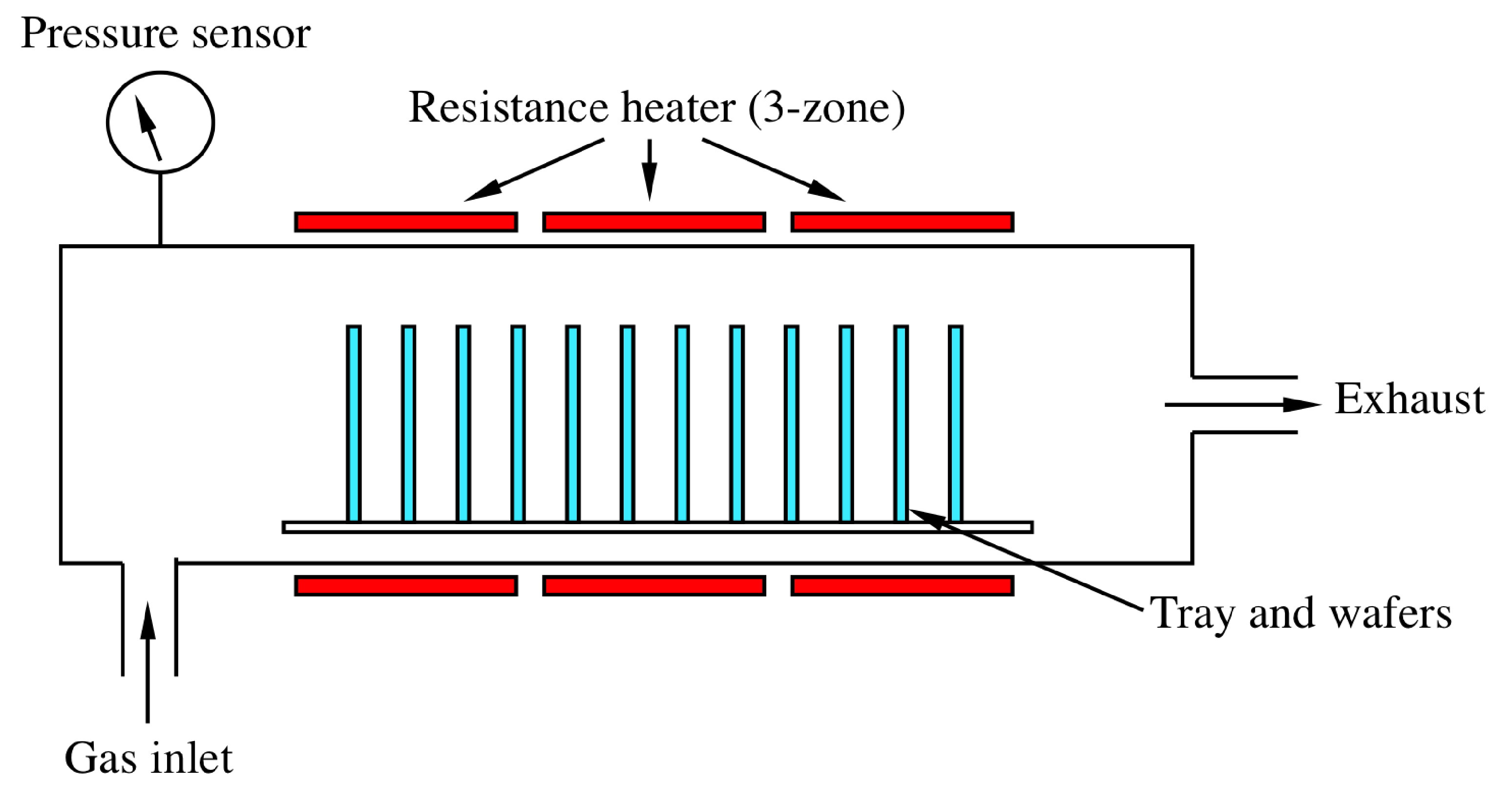| << Chapter < Page | Chapter >> Page > |

Another method of introducing liquid precursors involves flash vaporization where the liquid is passed into a flask heated above the boiling point of the liquid. The gas vapor is then passed through heated lines to the CVD chamber. Often, a carrier gas is added to provide a fixed flow rate into the reactor. This method of precursor introduction is useful when the precursor will decompose if heated over time. A similar technique called spray pyrolysis introduces the precursors in the form of aerosol droplets. The droplets evaporate in the chamber from the heated gas above the substrate or heated chamber walls ( [link] ). Then the reaction proceeds as a normal CVD process.

In thermal CVD temperatures as high as 2000 °C may be needed to thermally decompose the precursors. Heating is normally accomplished by use of resistive heating, radio frequency (rf) induction heating, or radiant heating. There are two basic types of reactors for thermal CVD: the hot wall reactor and the cold wall reactor.
A hot wall reactor is an isothermal furnace into which the substrates are placed. Hot wall reactors are typically very large and depositions are done on several substrates at once. Since the whole chamber is heated, precise temperature control can be achieved with correct furnace design. A disadvantage of the hot wall configuration is that deposition occurs on the walls of the chamber as well as on the substrate. As a consequence, hot wall reactors must be frequently cleaned to reduce flaking of particles from the walls which may contaminate the substrates. Furthermore, reactions in the heated gas and at the walls deplete the reactants and can result in feed rate limited growth. [link] shows a typical low pressure hot wall CVD reactor.

In a cold wall reactor only the substrate is heated, usually by induction or radiant heating. Since most CVD reactions are endothermic, deposition is preferentially on the area of highest temperature. As a result, deposition is only on the substrate and the cooler reactor walls stay clean. Cold wall CVD has two main advantages over the hot wall configuration. First, particulate contamination is reduced since there are no deposits formed on the walls of the reactor. Second, since decomposition only occurs on the substrate there is no depletion of source gases due to reaction on the walls. However, hot wall reactors tend to have higher throughput since the designs more easily accommodate multiple wafer configurations.
The final issue in design of a thermal CVD reactor is the operating pressure. The pressure of the reactor has a large effect on the rate limiting step of the deposition. Atmospheric pressure reactors have a large boundary layer ( [link] ) and non-uniform diffusion of reactants through the boundary layer often results in non-uniform film compositions across the wafer. Conversely, low pressure reactors have a nearly non-existent boundary later and reactants easily diffuse to the substrate ( [link] ). However, the difficulty in maintaining a uniform temperature profile across the wafer can result in thickness non-uniformities since the deposition rate in low pressure reactors is strongly temperature dependent. Careful studies of the flow dynamics and temperature profiles of CVD reactors are always carried out in order to achieve uniform material depositions.

Notification Switch
Would you like to follow the 'Chemistry of electronic materials' conversation and receive update notifications?